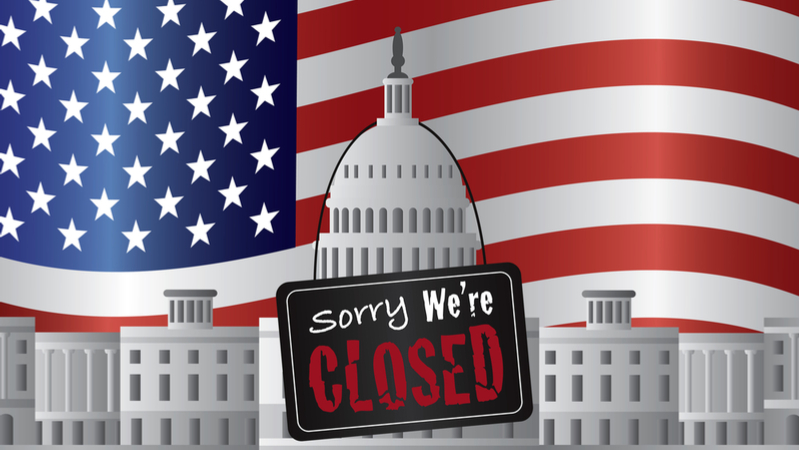
Once again, Washington is racing toward a shutdown. In what is becoming practically a monthly political exercise, Republicans and Democrats are unable to come to an agreement on how to fund the government. If a compromise isn’t reached, the shutdown will start Friday, Jan. 19 at 11:59 p.m.
With the deadline fast approaching, Federal workers (and agencies) are busy seeing if they will be coming to work on Monday or enjoying an (unpaid) vacation. While the government will furlough 850,000 employees to save money, many tech employees will continue working. Any tech employees whose work supports national security or public safety will work in the event of a shutdown. So, for instance, a Customs and Border Protection computer programmer will go to work on Monday regardless of the shutdown, but an Internal Revenue Service IT specialist will get furloughed if a deal isn’t reached. Meaning, that the country will, hopefully, remain secure.
While the immediate concerns regarding a shutdown focus on the 850,000 furloughed Federal employees, National Parks being closed, and D.C. not having sanitation services, the big picture concern is long-term budget uncertainty.
In recent years, passing long-term spending measures has not been a simple task. Instead, the budget process is riddled with short term–2 months, 2 weeks, or 2 days–continuing resolutions (CRs), which frequently result in the country being at the brink of a shutdown, or, as in 2013, nearly defaulting on its debt. With CRs becoming more popular, agencies are adapting their spending to meet the growing financial uncertainty, with concerning ramifications.
“Year after year, the failure of Congress to do its job has eroded the ability of Federal agencies to make prudent program, policy, and management decisions on everything from national defense to the delivery of social services,” said Max Stier, president and CEO of the Partnership for Public Service, in an NBC op-ed. “The Department of Homeland Security, for example, repeatedly has had plans disrupted to strengthen cybersecurity defenses because of funding uncertainties.”
Government leaders agree with Stier’s assessment. Navy Secretary Richard Spencer said that ongoing budget uncertainty has cost the Navy $4 billion since 2011 due to stalled acquisition programs and deferred maintenance.
“We have put $4 billion in a trash can, poured lighter fluid on it, and burned it,” Spencer said in remarks at a U.S. Naval Institute forum in Washington back in December–shortly before another potential shutdown. “Four billion is enough to buy a squadron of F-35s, two Arleigh Burke-class destroyers, 3,000 Harpoon missiles. It’s enough money to buy us additional capacity that we need. Instead, it’s lost, because of inefficacy in the ways of the continuing resolution.”
Right now, the sticking points for Republicans and Democrats seem to be immigration and healthcare. Democrats are demanding protection for Dreamers and funding for CHIP. Republicans are hesitant to protect Dreamers following Trump’s objections, and funding for CHIP has been in and out of bills all week.
“Every hour we don’t have an agreement, the likelihood of another Republican government shutdown increases,” said Rep. Gerry Connolly, D-Va. “More importantly, a shutdown would be devastating to the American public, which relies on the Federal government to process Medicare and Veterans benefits, provide public safety, and protect public health. The last government shutdown was traumatic for Federal employees and government contractors, many of whom didn’t receive pay for [the] days they were furloughed. This is reckless, and not the way to run the Federal government. “
Other lawmakers expressed frustration with the frequent reliance on continuing resolutions to fund the government.
“Once again, a continuing resolution is needed to provide government funding and avoid a shutdown,” said House Appropriations Chairman Rodney Frelinghuysen, R-N.J. “We are now four months into the 2018 Fiscal Year, and Congress must act as soon as possible to ensure that proper, year-long funding for our national defense and other critical Federal programs is enacted.”
Budget discussions are ongoing, and can turn on a dime – or a presidential tweet. There is still time for Congress to prevent a shutdown, but fixing the growing trend of budget uncertainty will take far more than one piece of legislation.
